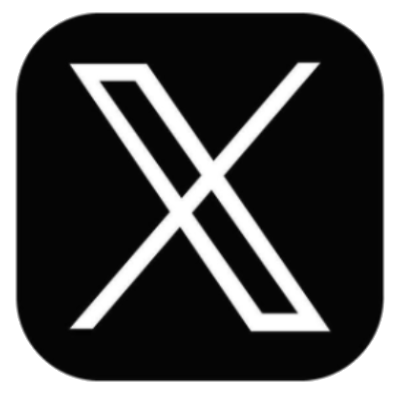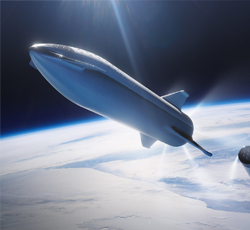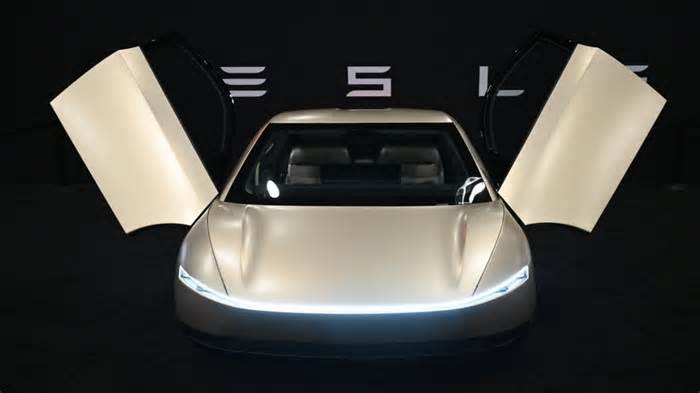
SpaceX's Falcon Heavy successfully takes off - My News 13
- by News 13
- Nov 01, 2022
- 0 Comments
- 0 Likes Flag 0 Of 5

— SpaceX (@SpaceX) October 31, 2022
On board the Falcon Heavy is the LDPE-2, which is basically a ring-like spacecraft that’s designed to host up to six payloads, which was manufactured by Northrop Grumman. It’s the second in a three-mission series for the LDPE program, which is overseen by the Enterprise Enabler Development Branch of the Innovation and Prototype Acquisition Delta.
LDPE-1 launched as part of the STP-3 mission on a Falcon 9 rocket in Dec. 2021. LDPE-3 is set to launch as part of USSF-67 on a Falcon Heavy rocket no earlier than January 2023.
"The LDPE-2 platform allows the USSF to cost-effectively prototype new elements of future space architectures before making major investments across the enterprise," said Brig. Gen. Tim Sejba, SSC's Program executive officer for Space Domain Awareness and Combat Power. "This capability has broad potential to fill capability gaps in our space systems architecture and provide helpful services for our mission partners with frequent and low-cost access to orbit."
A spokesperson for SSC said that LDPE-2 is carrying six payloads. This includes three, which will remain hosted on board and three, which will separate from the spacecraft. Because of the national security nature of the mission, they are simply described as “payloads that advance technology concerning communications and space weather sensing.”
The LDPE program is significant for national security because it is “aimed at accelerating risk reduction efforts to inform future Programs of Record,” according to the official.
“LDPE builds off the success of the Air Force Research Lab (AFRL) ESPA Augmented Geosynchronous Launch Experiment (EAGLE) program, which took the standard interface for secondary payloads (the ESPA ring) and added communication and propulsion capabilities to create a fully functioning host satellite,” the official stated.
While not initially confirmed by SSC before the launch, Tetra-1 satellite was among the payloads flying for USSF-44, confirmed Millennium Space Systems as soon the mission lifted off.
Another set of payloads likely onboard are the LINUSS-A1 and LINUSS-A2 satellites from Lockheed Martin in partnership with Tyvak Nano-Satellite Systems, a subsidiary of Terran Orbital Co.
Lockheed Martin describes them as a pair of 12U CubeSats, roughly the size of a toaster, which are designed “to validate essential maneuvering capabilities for Lockheed Martin’s future space upgrade and servicing missions, as well as to showcase miniaturized Space Domain Awareness capabilities.”
And Tuesday’s launch is also the 50th for SpaceX this year alone.
Tuesday’s launch will be only the fourth Falcon Heavy launch since it debuted in 2018. The last time the Heavy went up was in June 2019 for the U.S. Air Force’s Space Test Program (STP)-2 launch. That mission launched 24 experimental satellites for the Department of Defense.
However, the SpaceX Falcon Heavy booster rocket exploded hundreds of miles off the coast of Cape Canaveral as it tried to land on the company's drone ship floating in the Atlantic.
The two side boosters successfully landed on land at Cape Canaveral Air Force Station about 8 minutes after launch. The center, main core booster headed for the drone ship, floating about 700 miles off our coast — about twice as far as it usually it is for a sea landing because of the requirements of the mission.
But the main booster core missed its mark and exploded in the ocean.
Watch the launch
Please first to comment
Related Post
Stay Connected
Tweets by elonmuskTo get the latest tweets please make sure you are logged in on X on this browser.






 Energy
Energy


















